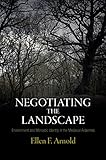Negotiating the Landscape : Environment and Monastic Identity in the Medieval Ardennes / Ellen F. Arnold.
Material type: TextSeries: The Middle Ages SeriesPublisher: Philadelphia : University of Pennsylvania Press, [2012]Copyright date: ©2013Description: 1 online resource (312 p.) : 2 mapsContent type:
TextSeries: The Middle Ages SeriesPublisher: Philadelphia : University of Pennsylvania Press, [2012]Copyright date: ©2013Description: 1 online resource (312 p.) : 2 mapsContent type: - 9780812244632
- 9780812207521
- Benedictine monasteries -- Belgium -- Stavelot -- History -- To 1500
- Benedictine monasteries -- Belgium -- Stavelot -- History -- To 1500
- HISTORY -- Medieval
- Human ecology -- Religious aspects -- Catholic Church -- History -- To 1500
- Human ecology -- Religious aspects -- Catholic Church -- History -- To 1500
- Human ecology -- Religious aspects -- Catholic Church
- Human ecology -- Ardennes -- History -- To 1500
- Human ecology -- Ardennes -- History -- To 1500
- Landscapes -- Religious aspects -- History -- To 1500
- Landscapes -- Religious aspects -- History -- To 1500
- Landscapes -- Religious aspects
- Landscapes -- Ardennes -- History -- To 1500
- Landscapes -- Ardennes -- History -- To 1500
- Middle Ages
- Religious Studies
- HISTORY / Medieval
- History
- Medieval and Renaissance Studies
- Religion
- Religious Studies
- 271/.1049346 23
- BX2612.A79
- online - DeGruyter
- Issued also in print.
| Item type | Current library | Call number | URL | Status | Notes | Barcode | |
|---|---|---|---|---|---|---|---|
 eBook
eBook
|
Biblioteca "Angelicum" Pont. Univ. S.Tommaso d'Aquino Nuvola online | online - DeGruyter (Browse shelf(Opens below)) | Online access | Not for loan (Accesso limitato) | Accesso per gli utenti autorizzati / Access for authorized users | (dgr)9780812207521 |
Frontmatter -- Contents -- Introduction: Approaching the Medieval Landscape -- Chapter 1. Religious Roots -- Chapter 2. Controlling the Domesticated Landscape -- Chapter 3. Fighting over Forests -- Chapter 4. Creating Conflict -- Chapter 5. The Religious Landscape and Monastic Identity -- Epilogue. The Passio Agilolfi Revisited -- Timeline -- Handlist of Sources -- Notes -- Bibliography -- Index -- Acknowledgments
restricted access online access with authorization star
http://purl.org/coar/access_right/c_16ec
Negotiating the Landscape explores the question of how medieval religious identities were shaped and modified by interaction with the natural environment. Focusing on the Benedictine monastic community of Stavelot-Malmedy in the Ardennes, Ellen F. Arnold draws upon a rich archive of charters, property and tax records, correspondence, miracle collections, and saints' lives from the seventh to the mid-twelfth century to explore the contexts in which the monks' intense engagement with the natural world was generated and refined.Arnold argues for a broad cultural approach to medieval environmental history and a consideration of a medieval environmental imagination through which people perceived the nonhuman world and their own relation to it. Concerned to reassert medieval Christianity's vitality and variety, Arnold also seeks to oppose the historically influential view that the natural world was regarded in the premodern period as provided by God solely for human use and exploitation. The book argues that, rather than possessing a single unifying vision of nature, the monks drew on their ideas and experience to create and then manipulate a complex understanding of their environment. Viewing nature as both wild and domestic, they simultaneously acted out several roles, as stewards of the land and as economic agents exploiting natural resources. They saw the natural world of the Ardennes as a type of wilderness, a pastoral haven, and a source of human salvation, and actively incorporated these differing views of nature into their own attempts to build their community, understand and establish their religious identity, and relate to others who shared their landscape.
Issued also in print.
Mode of access: Internet via World Wide Web.
In English.
Description based on online resource; title from PDF title page (publisher's Web site, viewed 24. Apr 2022)


